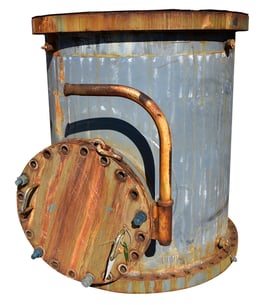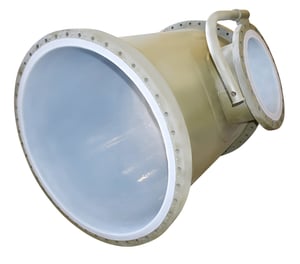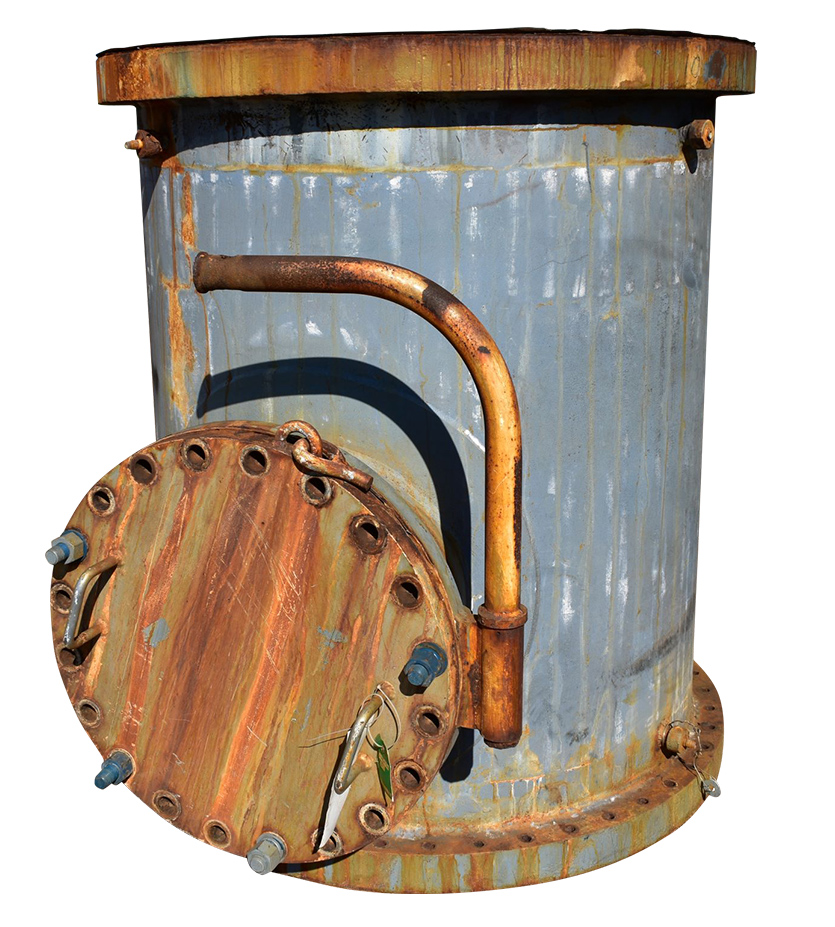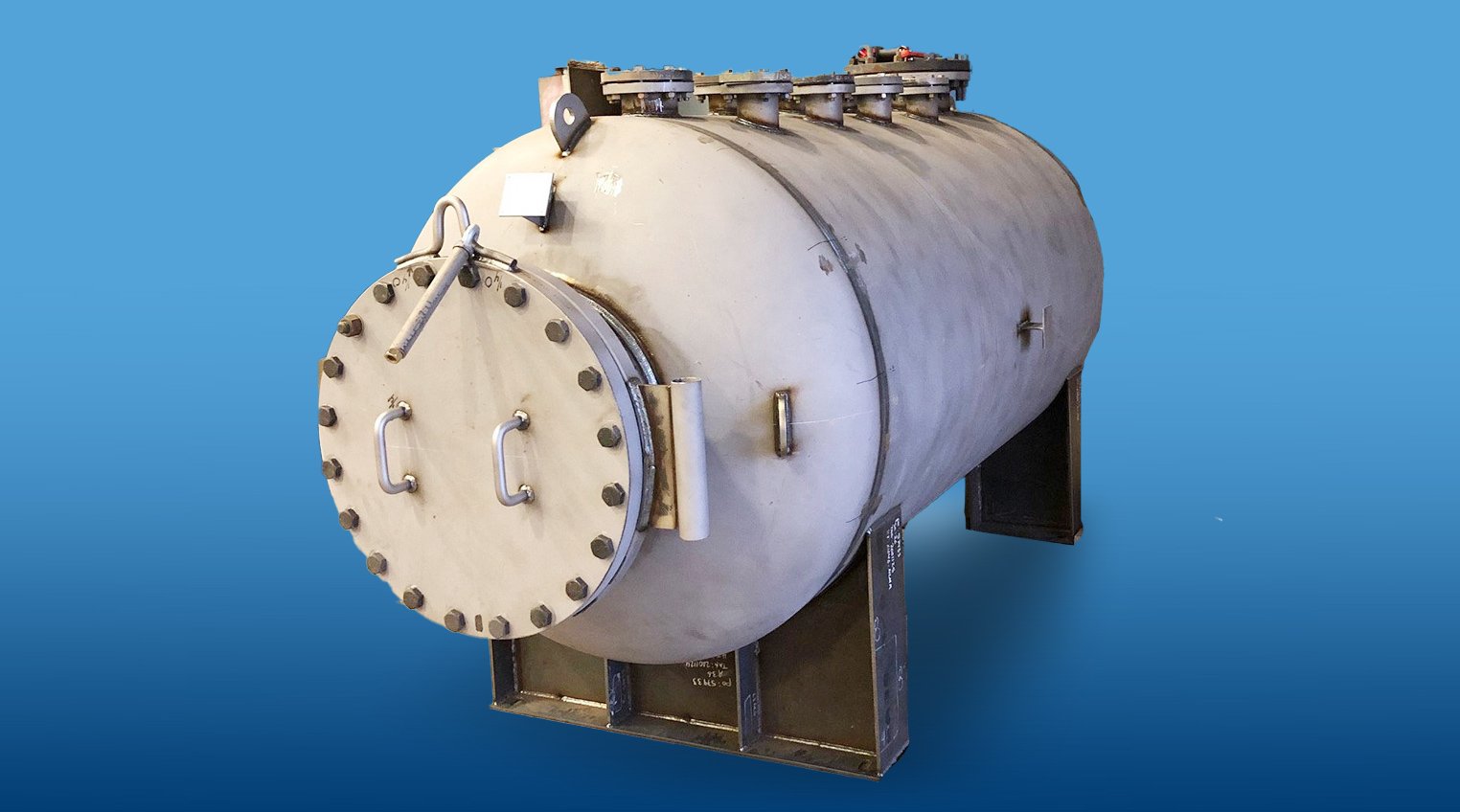‘R’ Certification Ensures Quality ASME Pipe and Vessel Repair
Pipes and vessels used in the chemical processing, mining, and oil and gas industries periodically require relining, repair, or replacement. Preventive maintenance practices help protect companies against unscheduled downtime due to pipe or vessel failure, a situation that could cost millions of dollars per day. The avoidance of catastrophic failure or shutdowns also highlights the importance of dealing with an experienced pressure vessel repair and fabrication company to ensure quality, durability, and reliability.
RMB Products is qualified with both ‘R’ and ‘U’ Certificates of Authorization issued by the National Board of Boiler and Pressure Vessel Inspectors. These two certificates enable RMB to repair or fabricate ASME code-stamped pressure vessels and piping. Companies routinely send in piping or vessels for repairs during scheduled maintenance periods, and when capacity allows, RMB has assisted companies in emergency situations. Find out what is involved with diagnosing repair or replacement projects and the signs to watch for that indicate piping or vessels need attention.
Preventive maintenance and testing determines pipe or vessel status
Preventive maintenance and regularly scheduled inspections provide the best means to determine whether a vessel or pipe requires attention. The longer the service life, the more likely a repair or replacement is necessary. Periodically check high-risk or older equipment to see if the material shell is corroding or thinning down. Diligence in conducting regular maintenance checks is the first line of prevention to avoid emergency repairs.

Within the oil and gas industry, for example, the American Petroleum Institute (API) has issued multiple standards related to maintenance inspection, rating, repair, and alteration of pressure vessels and pipes, such as the API 510 Pressure Vessel Inspection Code or the API 570 Piping Inspection Code. According to the API, the U.S. has 2.5 million miles of energy pipelines.
Visual inspections can help detect corrosion or rust stains. Operators frequently use high- tech tools to detect minor issues within pipelines, enabling repairs or replacement during scheduled downtime periods in order to prevent emergency shutdowns or leaks.
Historical data about the pipelines, including the date and place of manufacture, coatings, and the type of products that have flowed through the pipelines provide valuable information for maintenance and help predict useful lifespan.
 Longer pipelines and those under water rely on “pigging,” or the use of a pipeline inspection gauge or gadget. These in-line inspection tools are referred to as pigs. An “intelligent pig” uses ultrasound, magnetic resonance, or magnetic flux leakage technology to inspect pipes, looking for corrosion or cracking and measuring wall thickness — all while recording and storing the data. These underwater pipes must have a wall thickness capable of withstanding internal and external pressures, as well as installation stresses.
Longer pipelines and those under water rely on “pigging,” or the use of a pipeline inspection gauge or gadget. These in-line inspection tools are referred to as pigs. An “intelligent pig” uses ultrasound, magnetic resonance, or magnetic flux leakage technology to inspect pipes, looking for corrosion or cracking and measuring wall thickness — all while recording and storing the data. These underwater pipes must have a wall thickness capable of withstanding internal and external pressures, as well as installation stresses.
Emergency situations can occur due to a variety of factors, including natural causes. RMB anticipates peak periods of repair and pipe replacement after hurricanes and other extreme weather events when pipeline damage is immediate and obvious.
These instances help illustrate the value of rotolining carbon steel as a more durable alternative to fiberglass- reinforced plastic (FRP). As just one example, FRP is brittle. When damaged due to weather conditions or other occurrences, liners constructed of FRP will crack or shatter, causing complete lining failure.
In addition to supplying a greater degree of durability than alternatives, RMB rotolining options can offer a valuable protective feature for industries that experience biofouling, microbiologically influenced corrosion (MIC), or even barnacle buildup. Industries that suffer from the consequences of biofouling and MIC can include power plants, food and beverage, chemical processing, nuclear power generation, water treatment, and oil and gas (saltwater applications). RMB can apply a proprietary blend of HDPE liner mixed with an antimicrobial blend called RMB BIO-ARMOR™, which inhibits barnacles and biofouling that can cause corrosion-induced failures and/or clogging.
Relining with rotolining offers a simple fix

As a first step, RMB is usually contacted by a customer with a defunct vessel, most often from the chemical processing, mining, or oil and gas industry. The most common reason for the repair is due to a previous liner failure or to replace a rotolined interior that has reached the end of its lifespan.
Approximately 80% of the jobs that come into RMB involve relining an existing pipe or vessel. RMB can either make a new vessel or repair the vessel that exists, utilizing rotolining for corrosion protection and chemical resistance. This can be done if the part has the correct geometries to work within the system. Most often, a pipe or vessel will have multiple failure points due to a lining failure or failure to appropriately maintain the vessel.
In instances of preventive maintenance for relining, a customer will send in a vessel or several sections of pipe on a flatbed truck during a prescheduled maintenance period. A few of the steps that follow would include:
- Send vessels to the burnout oven to remove the old liner
- Inspect the pipe and vessel interior to ensure the interior is cleaned out
- Upon passing inspection, reline the vessel and return it to the customer
For the more basic relining procedures, the engineering team is usually not involved. The owner of the pipe or vessel is ultimately responsible for ensuring verification of appropriate wall thicknesses.
Repair or replacement scenarios for ASME vessels
The remaining 20% of projects involve repair or replacement. When there is a localized failure or in instances when corrosion is just beginning to take hold, oftentimes RMB can remove the corroded material and patch and repair the pipe or vessel. This will prevent the spread of corrosion and extend the lifespan of the equipment. These situations pose the most cost-effective scenarios for repair.
Part of repair is a proper diagnosis by the engineering team. RMB will call in a third party to conduct thickness checks of the wall of the vessel or section, compare the results to the original figures in the registry for that vessel, and calculate its current pressure capabilities. Any third-party inspector, if appointed by RMB, will hold American Society for Nondestructive Testing certifications. The engineer must determine the registered pressure level for the vessel and whether it falls within specifications for safe operation at the current thickness level. If it does, the team can proceed with a repair.
Oftentimes, ASME pressure vessels are built with multiple sections. The RMB team can replace a single section that has failed with a partial replacement. Regardless of whether the entire vessel or a single section is repaired, ASME standards and rules apply. A single section repair poses a more economical option than replacing an entire column.
RMB’s capabilities extend to applications that do not require ASME certification, such as some vessels in the mining industry that operate at atmospheric pressure. The process of tumbling heavy aggregates to separate them from desired minerals can physically erode mining vessels. When these vessels need repair, operators can have confidence in the skills and quality supplied by a certified ASME repair shop.
At the beginning of the repair process, the RMB team performs a visual inspection, as well as examine the inspection results from a third-party-certified NDT company, if deemed necessary.
Next, the RMB engineering team compares the information from the inspection with the operating conditions of the vessel and its original registered values to decide on a course of action. This plan can take one of the following directions:
- No action is required.
- Repair the vessel back to the original maximum allowable working pressure (MAWP) and corrosion allowance.
- Reregister the vessel at a new MAWP, provided it can operate safely in the owner’s use case.
The RMB engineering team works with an ASME authorized inspector (AI) to formulate a plan of action, which can include:
- Patches
- Feathering/tapering
- Surfacing welds
- Section or nozzle replacement
RMB welders make repairs based on the designated game plan developed by RMB engineering and the ASME AI.
A third-party nondestructive testing (NDT) company performs the necessary inspection to verify repairs are successful using one or more technologies applicable to that particular inspection, such as ultrasound, dye penetrant, mag particle, radiography, eddy current, or visual.
Following the inspection and verification of repairs, a lining is applied, and the team also applies any necessary external corrosion protection. The final inspection, documentation, and registration of the work performed are then completed.
At the owner’s request, a representative selected by the owner can be appointed to witness, verify, or inspect at any point during the process for their own satisfaction.
Schedule repairs in advance to avoid costly downtime
When pipes and vessels have extensive corrosion or the repair process would be too time consuming, a new vessel might supply the most practical and cost-effective solution. The cost of a new vessel might be just 20% more than the cost of a repair, with a similar timeframe for delivery. A new vessel can supply years of useful service and spare companies the cost of precious downtime for an extended repair.
Scheduling is critical, however, for any type of project. Companies with prescheduled maintenance should notify RMB well in advance to help avoid a backlog of projects that could delay a repair or replacement project.
On occasion, despite preventive measures, companies discover during routine maintenance or cleaning that there is a vessel or pipe section poised to fail — a vessel or piping section that wasn’t prescheduled for repair or rotolining with RMB.
While a normal turnaround time spans a few weeks, RMB understands the importance of bringing operations back online as quickly as possible. These lining experts try to expedite emergency projects as capacity allows. In the past, RMB has turned around relined pipes within a matter of a day.
When looking for a trusted supplier with the qualifications and experience to repair, reline, or replace an ASME vessel or pipe, look no further than RMB. RMB can manufacture and repair ASME vessels in conjunction with lining solutions.
Contact us to schedule your preventive maintenance repairs and relining today.




